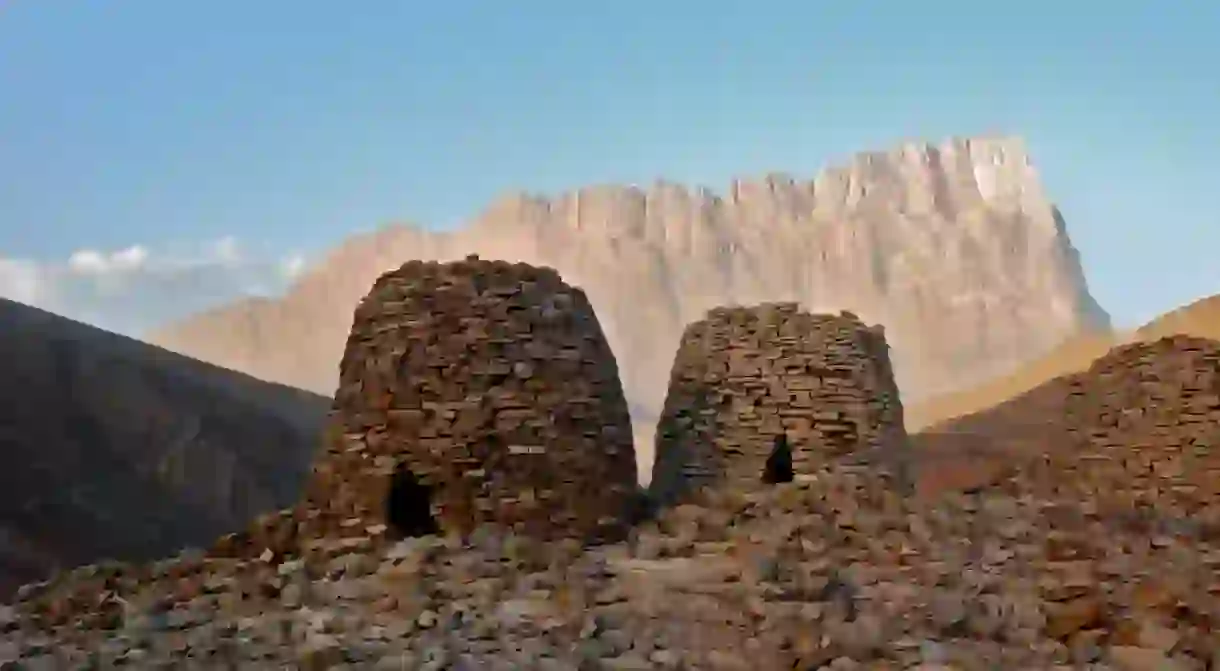Oman's Mysterious Beehive Tombs Are an Archaeologist's Dream

In the rugged terrain not far from Oman’s mountainous interior, lies one of the Arabian Peninsula’s most impressive archaeological sites. Dotted with beehive-shaped tombs, the archaeological landscape of Bat, Al Khutm, and Al Ayn is a remnant of an ancient civilisation and a time when empires were born as rapidly as they fell. Here’s your ultimate guide.

Background
Located in the Sultanate’s northwestern governorate of A’Dhahirah, the closest city to the archaeological site is Ibri, approximately 24 km (15 miles) away. Despite its relative isolation in modern times, the monumental towers and necropolises of Bat, Al Khutm and Al Ayn paint the picture of a highly civilized and active settlement whose mark has clearly stood the test of time.
The site
This stunningly well-preserved site was declared by UNESCO to be an “array fossilised bronze age landscape”, acting almost as a time-capsule for the BCE era. The rich landscape that is home to these beehive tombs was recognised as a World Heritage Site in 1988, and has continued to win plaudits for the treasure trove of data it has provided archaeologists from around the world. And it is those finds that have continued to fascinate researchers, with some calling the area proof that Oman was the location of Magan, an ancient land depicted in Akkadian cuneiform texts.
According to a report by a team from New York University (NYU), “some of the earliest writings in the world discuss the land of Magan, describing its resource rich lands. These texts were written by scribes in Mesopotamia, who not only documented the Mesopotamian kings’ lust for Magan’s resources, but also their boasts of conquest.”

The importance of archaeology
The archaeological site of Bat, Al Khutm and Al Ayn, sheds light on what Oman might have been like 4,000 years ago and lends weight to the theory that copper and other items in the form of tributes helped fuel the ancient powerhouses of the fertile crescent. The same report from NYU also states that “ceramics and other goods made in Mesopotamia, Meluhha (the Sumerian name for the Indus civilization), and Iran have been found in Bronze Age settlements and tombs across Oman. These finds, which complement textual sources, have traditionally been the focus of archaeological analysis.”
The tombs
Approximately 4,000-5,000 years old, the tombs themselves are divided roughly into two groups according to UNESCO: smaller single chambered tombs with walls that date to the beginning of the 3rd millennium BCE, and more elaborate multi-chambered tombs that date to the middle of the 3rd millennia BCE. Beyond the necropolises, the site includes towers, irrigation systems, and queries where the building materials used to create such monumental works were mined.
Significance in Oman
Its no wonder that this UNESCO World Heritage Site has gained a legendary reputation among archaeologists and adventurers alike. With its combination of ancient beauty and mystique, the beehive tombs and the surrounding area are not just remnants of an ancient civilisation: they are a snapshot back in time and the perfect addition to a history-lover’s itinerary in Oman.













